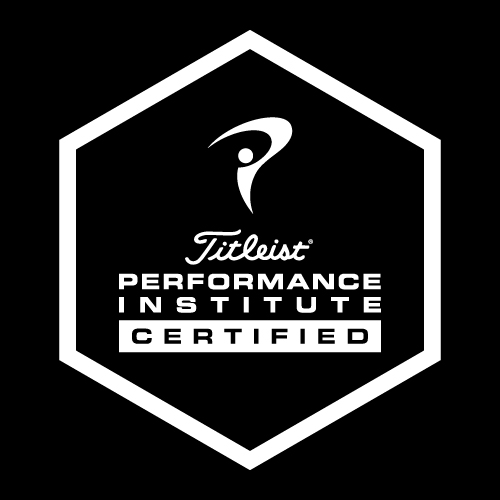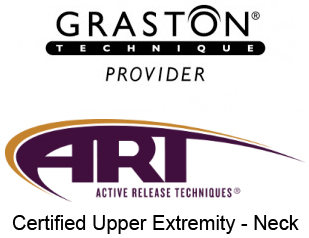
A great golf swing isn’t just about technique-it’s about HOW your body MOVES.
At PT for Golfers I help golfers move better, feel better, and play stronger-without pain.
If you are suffering with pain, mild discomfort or recovering from an injury or surgery; then you are probably struggling with your swing power and consistency. Even if you’re dealing with tightness, weakness, or stiffness, your body is still forced to compensate for the demands of the golf swing. You may not notice it-but those compensations are absolutely showing up in your swing.

Let PT for Golfers provide you with a comprehensive full body physical therapy evaluation coupled with the proven TPI screen to uncover mobility, strength, or stability issues that may be affecting your swing. Understanding the three-dimensional biomechanical demands of the entire body as they relate to golf allows me to both rehabilitate and train you to enhance performance and minimize injury risk. Whether you’re recovering from pain or injury, or simply want to play better, safer, and longer, I’ll help prepare your body to meet the demands of your game.
Through advanced hands-on physical therapy-including trigger point release, deep-tissue elongation, pin-and-stretch, myofascial release, joint mobilizations, osteopathic strain-counterstrain, active release, passive stretching, Graston Technique, cupping, and more—I help you restore the mobility that pain and stiffness have taken away.
Many golfers are amazed at how much freer and more powerful their movement becomes, even if they’ve lived with chronic arthritis, degenerative changes, old injuries, or lingering trauma.
In addition to improving your mobility through skilled manual therapy, I teach you precise, targeted home exercises that address your specific swing limitations discovered in your assessment. You will have the exact tools to increase your flexibility while also building the stability and control needed to maintain-and even amplify-your results.

In 2012, I earned certification as an NG360 Nike Golf Functional Performance Trainer, powered by the Gray Institute. Although the official Nike program has since ended, the principles, movement science, and performance strategies continue to inform my work today. Today, I combine this knowledge with my Titleist Performance Institute Certified (TPI Certified) knowledge to bring you the very best in PT and golf.
There’s No One “Right” Swing – Just the Right Swing for You!
Every golfer has their own unique swing. While some swings may look different on the outside, what really matters is how efficiently that swing works for your body. Efficiency isn’t about copying a perfect form-it’s about how well your body moves to produce power with control, consistency, and minimal strain.
That is why I don’t believe in a one-size-fits-all swing. Instead, I help you discover and develop the most efficient swing for your body-by optimizing your mobility, strength, and movement patterns. If you have a golf coach, all the better! Your golf pro will drive your car, and I will be his or her pit crew, assisting the mechanics of the car. Yes, you are the car.
Your golf pro can direct me on your needs and priorities. They can tell me the swing characteristics you are working on or need assistance correcting and together with my physical assessment, we can get there faster.
When your joints and muscles move the way they were designed to, your swing improves automatically-and pain becomes a thing of the past.
Better Mobility = Better Swing = Better Game

A powerful, repeatable swing demands coordination between the feet, hips, pelvis, trunk, shoulders and wrists. But limitations in just one area can throw everything off. When mobility or strength is lacking-especially in areas like hip internal rotation-you end up compensating elsewhere: the spine, knees, feet, even the wrists. These compensations reduce power and increase your risk of injury.
Most golfers don’t even realize their bodies are adapting-they simply adjust and keep swinging. But if you can’t rotate the necessary 60 degrees through your hips, knees, or ankles, you may find yourself coming out of posture, early extending, or developing casting and scooping patterns. Restrictions in your upper back or shoulder rotation might flatten your shoulder plane, forcing your wrist or elbow to absorb stress just to keep the clubface square and avoid a slice. Many swing flaws aren’t due to poor technique-they happen because your body has no other way to make contact with that little white ball.
Did you know the body’s nervous system is wired to take the path of least resistance? It seeks efficiency and safety, favoring stability over mobility-especially when it senses a threat, weakness, or discomfort.
Take the thoracic spine-the upper torso. Fortunately for us in golf, these 12 vertebrae are built for three-dimensional movement: flexion/extension, side bending, and crucially, rotation. Golf is a rotary sport, and we rely on thoracic mobility for a powerful and efficient swing. In contrast, the lumbar spine (low back) is not built for rotation. So when the brain senses instability, pain, or inadequate strength, it often restricts thoracic motion-shutting it down to protect the body.
What happens next? The golf player may compensate with a reverse spine angle, excessive slide, hanging back, or casting/scooping-patterns that are often rooted in mobility or control deficits. My job is to figure out why: is it a mobility issue, a strength deficit, a motor control problem-or most likely, a combination of all three? I identify and address these limitations so you have the physical tools you need for your swing to reach its full potential.
And by the way-if that thoracic spine stays locked down, then the player will often try to rotate through the lumbar spine instead… which is not designed for it. That’s where low back pain enters the picture.
What if your body didn’t have to work around those limitations?
What if you could stop stealing from Peter to pay Paul. Have you noticed that just as one area stops being the problem, another area pops up? Or perhaps you simply don’t have the power you used to and think its age related.
What if we could restore the motion and power your swing was meant to have?
Yes, you can regain mobility-even with arthritis.
Yes, your swing can become smoother, more powerful, and more repeatable.
And yes, you can do it without hurting your back, knees, or shoulders in the process.
Let me help you get there.
Why VCPT – PT for Golfers Is Different

Traditional PT education often stops at injury rehab. But movement optimization? Functional mechanics? That’s a different level.
Through my year-long Fellowship in Applied Functional Science, I learned how to assess and train the body in the way it truly functions-across planes of motion, in response to gravity, and through real-life forces like momentum and ground reaction. Golf is a perfect example: it’s dynamic, rotational, repetitive, and demands both power and precision.
That’s why golfers need a therapist who doesn’t just treat pain-but understands how the body works as a system to create a powerful, efficient swing.
I combine my PT expertise, with my functional science fellowship training, together with the TPI’s Assessment Screen and training. If you don’t assess, it’s just a guess.
To achieve an efficient swing, a golfer must first be screened. A proper screen involves an assessment of swing mechanics, biomechanics, physical fitness, movement quality, current health, and injury history. I will include both video assessment analysis of your swing with the full body PT evaluation and the TPI movement screen.
The TPI movement screen is a simple test to quickly evaluate a player’s physical capabilities. The results of that assessment are used to determine how technical elements of the player’s swing could be related to what their body can or cannot do. Once this screen is finished, the results are used to create a plan unique for that golfer. The plan may include fitness training, physical therapy and treatment, coaching of swing mechanics and biomechanics, nutrition, mental strategy or all of the above.
Let’s Get You Back in the Game
Here’s what you can expect when we work together:
- Play 18 holes without pain
- Drive the ball farther
- Hit straighter with less effort
- Reduce strain on your spine, knees, elbows and wrists
- Feel confident and fluid in your movement
No gym membership needed. No pills or surgery.
Just the right movements for your body-and a golf-specific home program to support your goals.
- Improve flexibility.
- Break inefficient movement habits.
- Play with more ease.
Schedule Your Golfer’s Assessment Today
You might be surprised to learn that a small issue-like limited motion in your foot-can restrict hip mobility and reduce your drive distance. Let’s identify what’s holding you back and create a plan to help you move better, feel better, and play better.
I also offer some free classes that combine a bit of assessment with corrective exercises for golf clubs. Please let me know if you are interested in more information?

